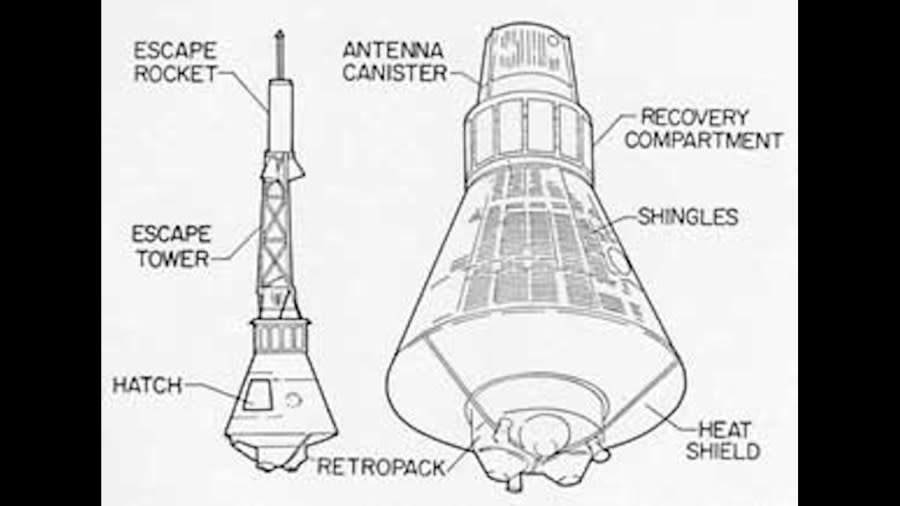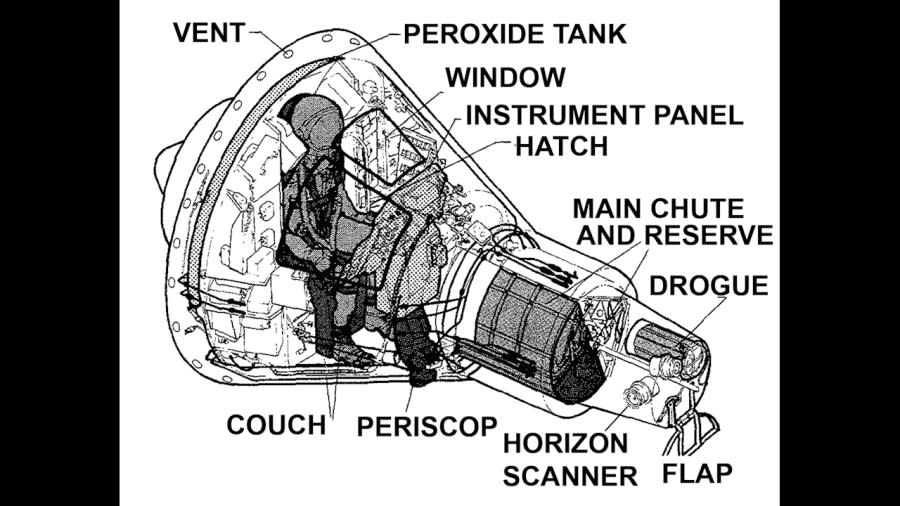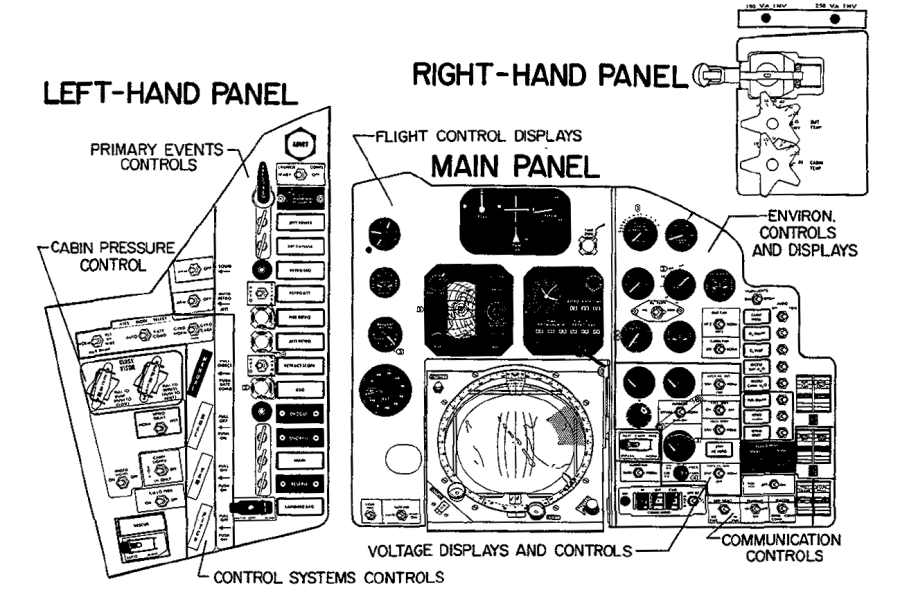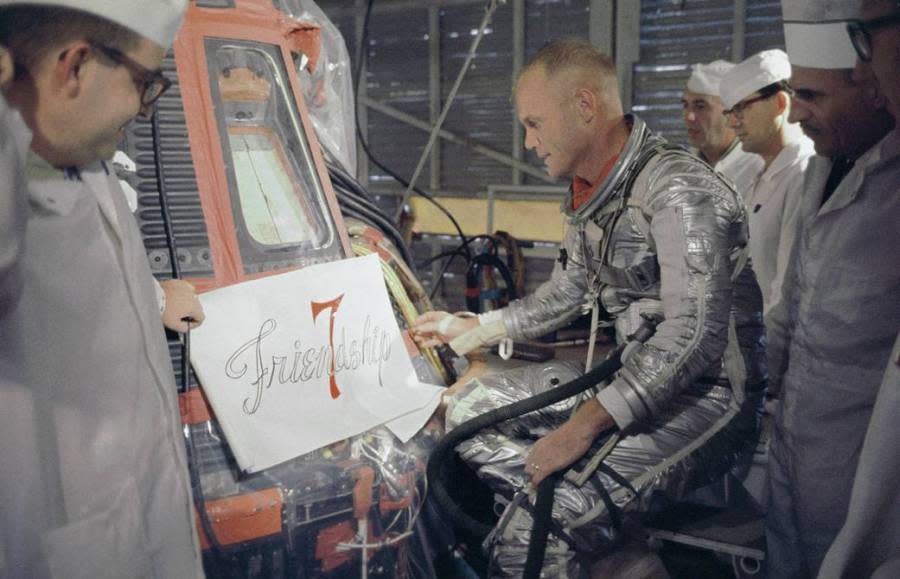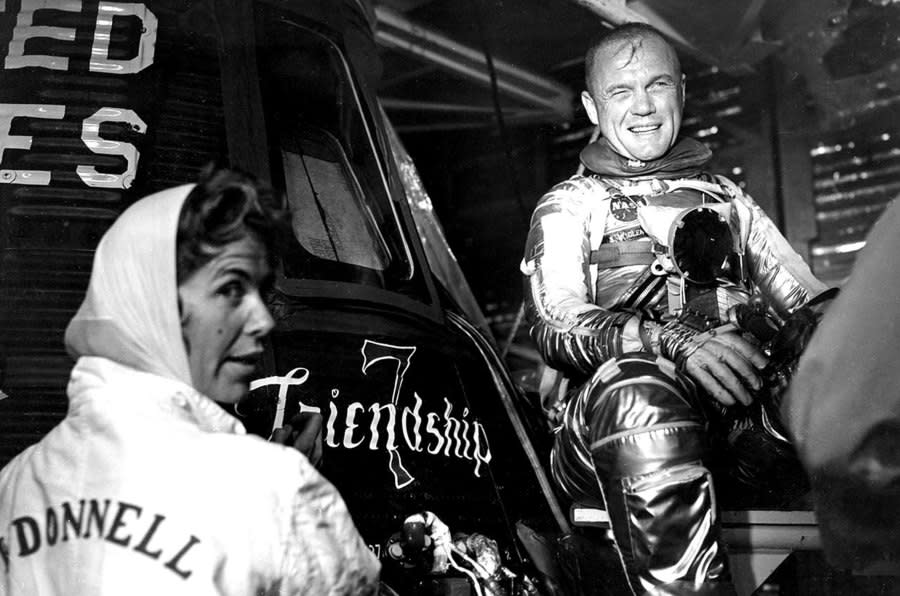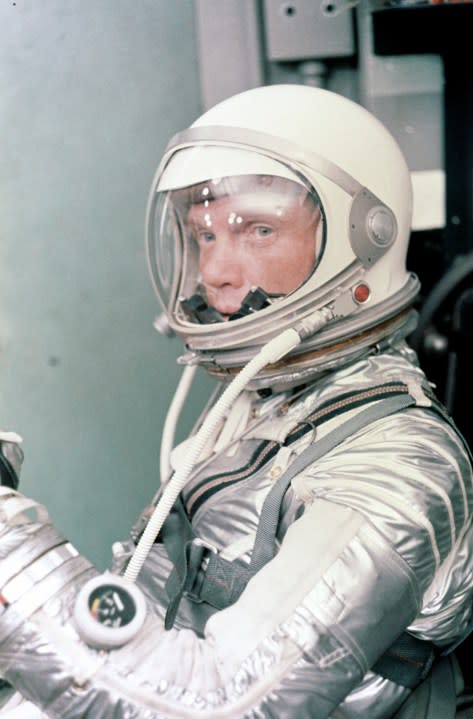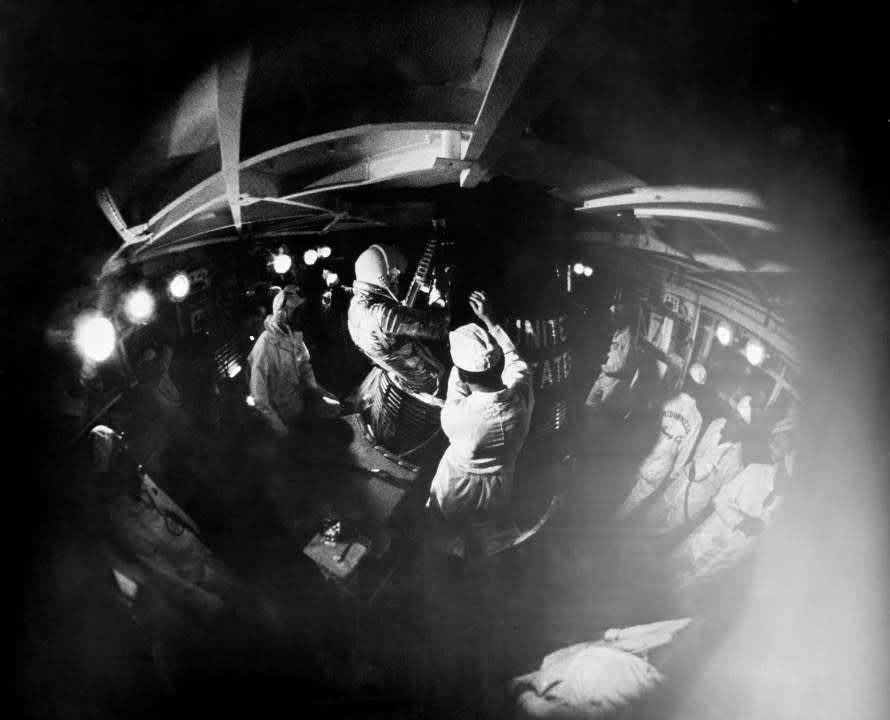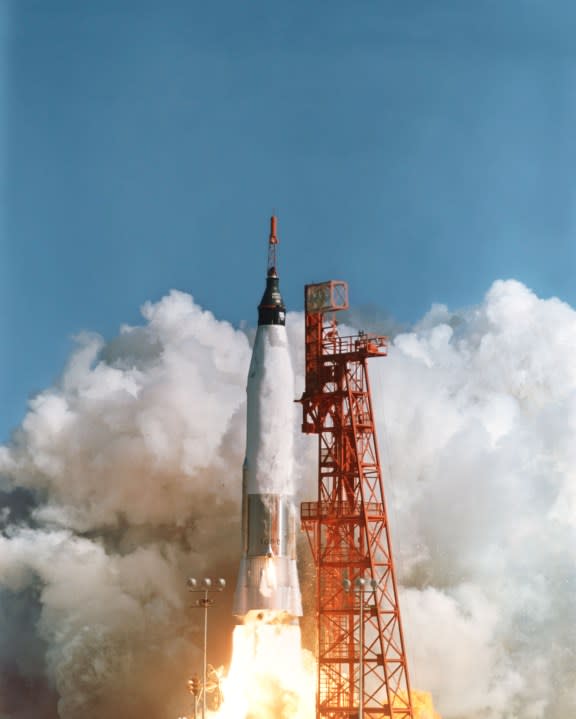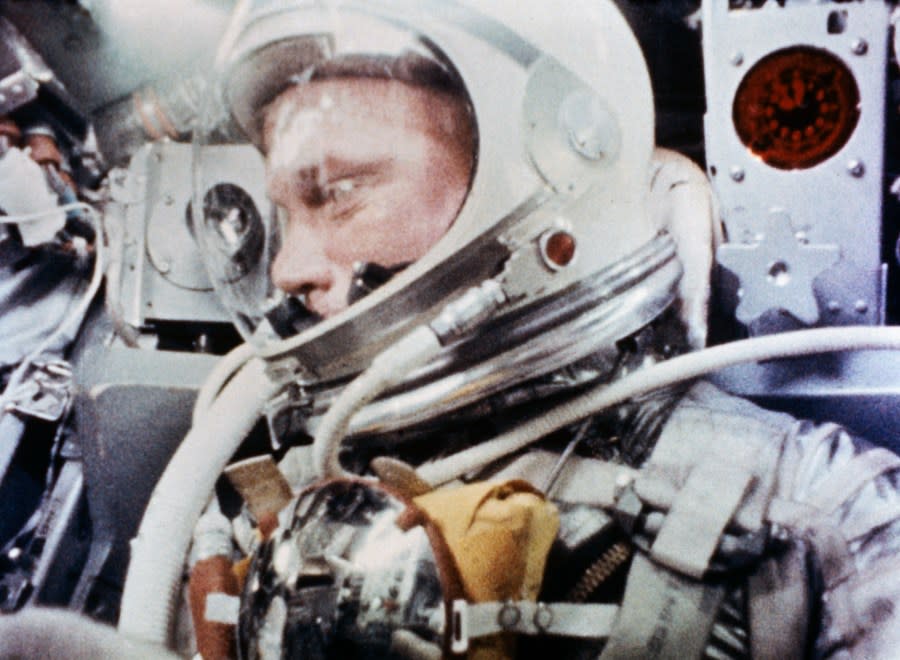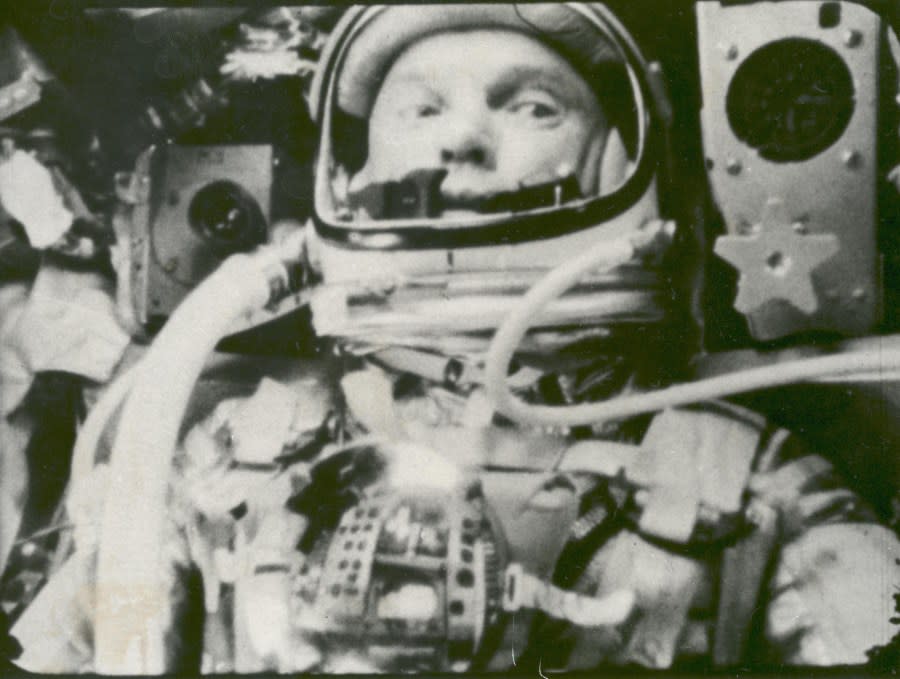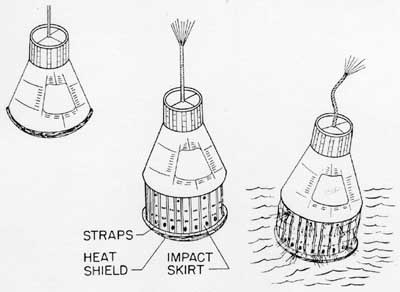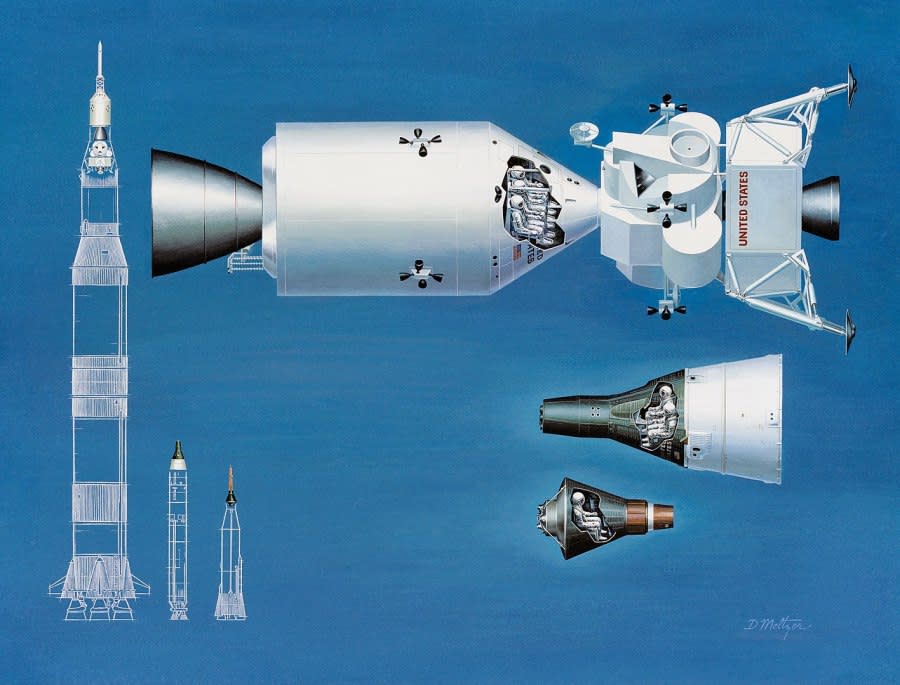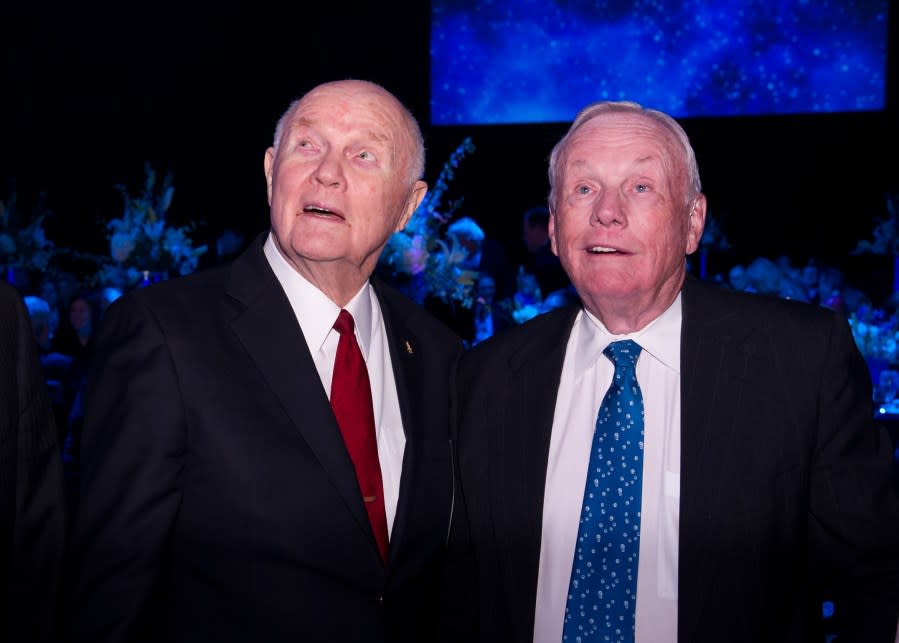February 20, 1962: John Glenn orbits the Earth

- Oops!Something went wrong.Please try again later.
CAPE CANAVERAL, Fla. (WHTM) — On Feb. 20, 1962, John Herschel Glenn Jr. climbed into the cramped confines of a Mercury space capsule, to become the third American in space, and the first to orbit the Earth. It was a journey which forced him to deal with failures in the spacecraft-and a gut-churning re-entry.
Glenn already had a distinguished military career before becoming an astronaut. He served as a Marine fighter pilot during World War II and the Korean War. Becoming a test pilot, he made the first supersonic transcontinental flight across the United States in 1957. (On board the plane, a camera took the first continuous, panoramic photograph of the United States.)
January 26, 1962: Ranger 3 Spacecraft Launches, making it zero for three
In 1959, he was selected as one of the “Mercury 7”, America’s first astronauts. (The number 7 was incorporated into the names of all the manned Mercury spacecraft; Glenn named his spacecraft Friendship 7. It was hand-painted on the capsule at his request, the way they were painted on his fighter craft.)
There were two hours and 17 minutes of holds in the countdown, but finally, at 14:47 UTC (or 9:47 EST) Glenn’s spacecraft left the launchpad. He would make three orbits around the Earth, on a voyage lasting four hours 55 minutes, and 23 seconds.
Project Mercury Patch (NASA) Diagram of Mercury spacecraft, showing escape tower (left) and retrorockets (right) (NASA) Interior cutaway of Mercury capsule (NASA) Control Panels of a Mercury Capsule (NASA) Astronaut John Glenn inspects artwork that will be painted on the outside of his Mercury spacecraft, which he nicknamed Friendship 7. (NASA) Chrysler Aerospace artist Cecelia Bibby paints Friendship 7 on NASA astronaut John Glenn’s Mercury spacecraft in early 1962. After selecting the name, Glenn insisted the individual who developed the artwork personally apply the paint. This was in spite of objections to the fact that women rarely, if ever, were allowed up the Launch Pad 14 gantry. (NASA) John Glenn and his “Friendship 7” Mercury capsule (NASA) Astronaut John H. Glenn Jr. dons his silver Mercury pressure suit in preparation for launch. On Feb. 20, 1962, Glenn lifted off into space aboard his Mercury Atlas (MA-6) rocket and became the first American to orbit the Earth. After orbiting the Earth 3 times, Friendship 7 landed in the Atlantic Ocean 4 hours, 55 minutes and 23 seconds later. (NASA) Destination: History Download On Feb. 20, 1962, John Glenn made history by becoming the first U.S. astronaut to orbit the place we call home–planet Earth. (NASA) Liftoff of the Mercury-Atlas 6 mission on Feb. 20, 1962. On this mission, John Glenn became the first American to orbit Earth. As part of the preflight checklist, Glenn asked engineers to get NASA research mathematician Katherine Johnson to check the orbital equations by hand on her desktop mechanical calculating machine. (NASA) This photograph of John Glenn during the Mercury-Atlas 6 spaceflight was taken by a camera onboard the spacecraft. (NASA) Astronaut John Glenn photographed in space by an automatic sequence motion picture camera during his flight on “Friendship 7.” Glenn was in a state of weightlessness traveling at 17,500 mph as these pictures were taken. (NASA) Diagram of Landing Bag (NASA) Size comparisons of Mercury, Gemini, and Apollo space craft and launch vehicles. (NASA) Sen. John Glenn, left, and Apollo 11 Astronaut Neil Armstrong are seen prior to the start of a dinner at Ohio State University that honored the 50th anniversary of John Glenn’s historic flight aboard Friendship 7 Monday, Feb. 20, 2012, in Columbus, Ohio. Glenn was the first American to orbit Earth. Photo Credit: (NASA/Bill Ingalls)
Down on Earth, people, people were following the journey minute by minute, glued to low-definition black and white televisions, following progress by radio, and… well, actually there wasn’t much else. No smartphones, no internet, no widescreen color 4K TV sets, no 24-hour news outlets. Just radio stations and three television networks-ABC, CBS, and NBC. Most of us who watched back then remember it mostly in grainy black-and-white images. Any color pictures and movies came after the fact when they’d been processed and printed. (Full disclosure-I was nine years old at the time.)
NASA astronauts go back to the future with capsule launch
Unbeknownst to people on Earth, Glenn was having issues with Friendship 7. Towards the end of his first orbit, the automatic stabilization and control system began to malfunction. Glenn would end up controlling the ship manually for much of the voyage.
Unbeknownst to Glenn, ground control was trying to make sense of a malfunction warning. Near the start of the second orbit, a sensor indicated the heat shield and landing bag were no longer locked in position.
Being sixty years into the future, this problem calls for further explanation. The Mercury spacecraft had a heat shield, which would absorb the worst of the heat from re-entry. Strapped to the heatshield was the retropack, a canister containing three small rocket engines, which when fired would slow the spacecraft to begin re-entry. It was literally strapped in place, to be jettisoned after firing.
Behind the heat shield was the landing bag. After re-entry, as the capsule floated down to the ocean on parachutes, the heat shield was to detach from the capsule, pulling out the landing bag, which would help cushion the impact of landing.
One of NASA’s newest astronauts is a Harrisburg native
If the indicator was giving a correct reading, and the heat shield was loose, the capsule might burn up on re-entry. It also meant the straps of the retropack were the only things holding the heat shield in place. Ground control told Glenn to keep the retropack on after they fired without telling him why. He found the order baffling but did it.
It was a rough ride home. Glenn watched chunks of flaming metal fly past his window, wondering if his heat shield was disintegrating. Fortunately, it was the sensor that malfunctioned, not the heat shield; he was seeing burning pieces of retropack. Glenn landed safely, an American hero.
John Glenn, 1st US astronaut to orbit Earth, dies at 95
John Glenn died on December 8, 2016, at the age of 95. He was the last surviving member of the original Mercury 7 astronauts.
To see an old NASA movie about the flight, click here.
For the latest news, weather, sports, and streaming video, head to ABC27.

